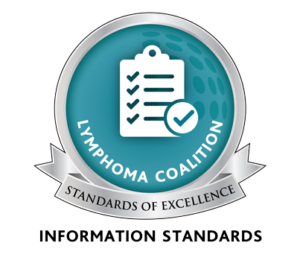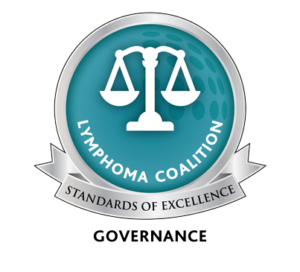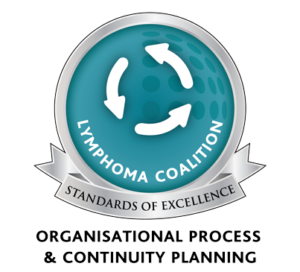The Complete Blood Count (CBC) is a test that measures how many blood cells are in your blood. The numbers of the different blood cells are often talked about as the ‘counts’. A person with CLL will have a high number of lymphocytes. There may also be lower numbers of red blood cells, neutrophils and platelets.
Blood is composed of plasma (the liquid portion) and cells. Over half of your blood is plasma. About 1% is white blood cells and platelets. The rest is red blood cells.
Your blood tests are looked at as a trend over time and not in isolation.
White Blood Cells
White blood cells (also called leukocytes) fight disease and infection by attacking and killing germs that get into the body. There are several kinds of white blood cells. The major types of white blood cells are neutrophils, lymphocytes, monocytes, eosinophils, and basophils. Each type of white blood cell plays a different role in protecting the body. B lymphocytes (B cells) are the type of white blood cell that becomes cancerous in CLL.
White Blood Cell Count (LKC or WBC)
The number of white blood cells in the blood.
Normal range: 4-10 billion per litre (bil/L)
Leukopenia is the redution in the number of white blood cells below normal range, which may leave a person at increased risk of infection. Leukocytosis is an in crease in the number of white blood cells above normal range.
White Blood Cell Types (WBC differential)
This test gives the percentage of each type of WBC in your blood.
Neutrophils (Neut M or Neut A)
Neutrophils are the most common type of white blood cell in the body. They are the first cells that fight infections or injury.
Normal range: 2.0-7.0 bil/L
Neutropenia is a reduction in the number of neutrophils, which may put a patient at higher risk of infection.
Red Blood Cells
Red blood cells are also called erythrocytes. Red blood cells carry oxygen from the lungs to the rest of the body. They also carry carbon dioxide back to the lungs so it can be exhaled.
Red Blood Cell (RBC) Count
The number of red blood cells in the blood. If the number of red blood cells falls below the normal range (anemia), the body may not be getting the oxygen it needs. If the number of red blood cells is higher than normal (polycythemia), there is a chance they will block capillaries (small blood vessels) and impair blood circulation.
Hematocrit (HCT)
The percentage of space (volume) red blood cells take up in the blood.
Normal range: Males: 38-50%; Females: 37-46%
Hemoglobin (HGB)
This is the part in the red blood cell that carries oxygen. It gives your blood its red colour.
Normal range: Males: 130-170 grams per litre (g/L); Females: 123-157 g/L
Mean Corpuscular Volume (MCV)
MVC shows the average size of the red blood cells.
Normal range: 80-100 fL
Mean Corpuscular Hemoglobin (MCH)
MCH is the amount of hemoglobin per red blood cell.
Normal range: 27-34 pg
Mean Corpuscular Hemoglobin Concentration (MCHC)
MCHC measures the average concentration of hemoglobin per red blood cell.
Platelets (Thrombocytes)
Platelets (thrombocytes) are small pieces of cell that help blood clot and stop bleeding if you are cut, injured or bleeding for another reason.
Platelet (Thrombocyte) Count
The number of platelets in the blood.
Normal range: 130-400 billion per litre (bil/L)
A low number than normal level of platelets (thrombocytopenia) can increase your risk of bleeding or bruising. Thrombocytosis is an increase in the number of platelets above normal levels.
Mean Platelet Volume (MPV)
Mean platelet volume measures the average amount of platelets. The MPV can be too high or too low even if the platelet count is normal.
Electrolytes
Electrolytes are important in the normal functioning of your body. Five types of electrolytes are measured.
- Calcium makes up bones and helps control electrical charges.
- Sodium helps balance the amount of water and blood in your body.
- Potassium helps your heart work.
- Magnesium plays an important role in the function of your muscles, nerves and immune system.
- Phosphate helps build and repair bones and also helps nerves and muscles work properly.





